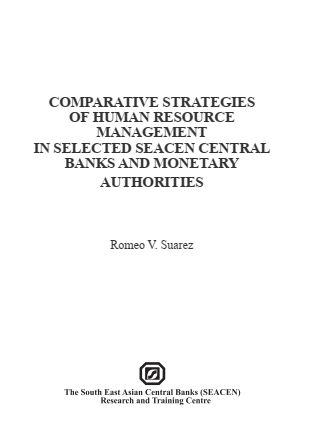The present economic environment requires central banks to adapt in order to perform their roles properly. With globalisation they must be able anticipate threats to financial and economic stability. The required competencies of central banks are vastly different from those a decade ago requiring different ways of managing human resources. As monetary authorities central banks are required to anticipate the undesirable changes in economic situations. Failing so could lead to disastrous results. To be able to cope with this and to respond with proper policies it is imperative for central banks to have a competent workforce. The study reveals a tapestry of comparative differences and similarities in prevailing HRM practices strategies and concerns (i.e. challenges risks and issues) of participating SEACEN central banks. One recurring concern for HRM of central banks include the problem on talent management covering acquisition selection and retention. HR strategies which are embodied in central banks medium and long term strategic plans address precisely these concerns. Among them are: Creating winning employee-value proposition in attracting best talent (talent acquisition selection retention) Staff turnover due to job environment; lack/absence of motivation; and migration/mobility for competitive job opportunities. Litigation by current/past employees for unfair HR decisions. Linkage between performance management system and rewards. Practices in talent sourcing management & retention. The extent of the gravity of these problems and the capacity of the central banks in addressing these challenges risks and issues depend on several factors such as the prevailing social climate and political environment corporate culture management support and budgetary constraints. The linkage between the central banks organisational and HR plans through their strategic plans or goals is a clear manifestation of each central banks desire and aspiration to become a world-class monetary authority and fulfill its role to maintain economic and financial stability that promotes national development and delivers a high quality of life for its citizens.
-
About Us
-
Events
-
Publications
-
About The SEACEN Centre
-
The Centre's Governance
-
Courses

